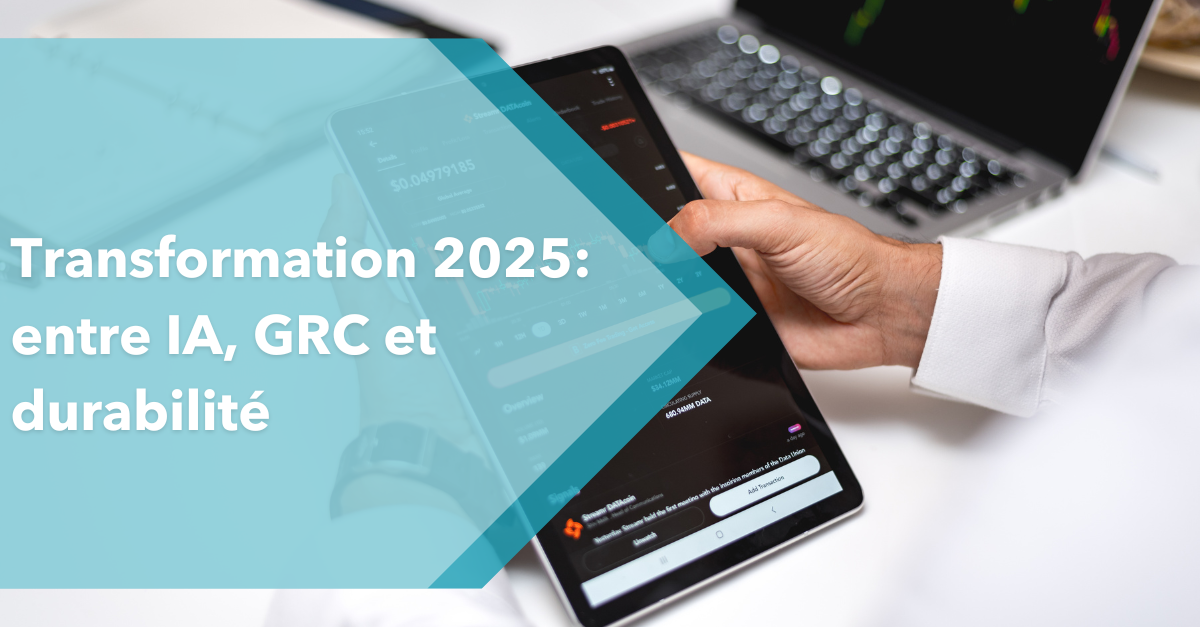New Frontiers for SAP, GRC & ERP in the Post-Cloud Era
Summer may be a time to pause, but for IT and business leaders, it’s time to look ahead. What needs to be launched this fall to remain agile, compliant, and competitive in the face of accelerating technological, industrial, and regulatory shifts?
As we move into the second half of 2025, one thing is clear: yesterday’s certainties are no longer enough. Innovation is now rooted in real usage. Architectures are becoming composable. AI no longer just observes—it acts. In the face of this rapidly evolving landscape, businesses need to revise their strategies—quickly, but with clarity.
Disruptions, Not Just Evolutions: The Real Technological Shift Is Here
2025 marks a pivotal moment in the way ERP and GRC environments are designed. This is no longer just about cloud migration or classic automation—what’s happening is a structural reconfiguration.
ERP Becomes Composable and Context-Aware
Businesses no longer want rigid, monolithic systems. Today, they expect ERPs that can adapt in real time to business priorities, easily integrate specialized external modules, and communicate seamlessly with industry-specific tools.
SAP has fully embraced this direction, strengthening SAP BTP, introducing Joule (its native generative AI), and expanding into microservices.
AI Is No Longer a Side Project
It is now embedded at the core of business processes:
-
automatic recommendations in SAP,
-
scenario generation in risk governance,
-
personalized alerts for sensitive access.
AI becomes a true co-pilot—not just a passive observer.
Cybersecurity Becomes Native
Far from being a technical silo, cybersecurity is now interwoven into business flows: identity management, control automation, and regulatory compliance (NIS2, GDPR, CRA…).
Boundaries between IAM, IGA, and GRC are dissolving in favor of unified governance.
What Companies Must Tackle Starting This Fall
Fall 2025 reshuffles the deck:
-
Technology governance must be rethought to accommodate a hybrid mix of cloud, on-premise, AI, and data analytics.
-
Smart prioritization is key: which initiatives should launch now to deliver value by 2026—without breaking the budget?
-
Sustainability must be embedded: CSRD requires ESG to be managed directly within the ERP (emissions, social indicators, energy footprint, etc.).
In other words: transformation is no longer about grand declarations—it’s about the ability to deploy agile, efficient, and real-world solutions.
Supporting Businesses Through These New Demands
To keep pace with accelerating technological and regulatory change, ArtimIS offers concrete solutions tailored to sector-specific and operational challenges:
- Custom ERP: Support in building composable and scalable ERP systems tailored to each organization’s operational reality.
- Smart Governance: Implementation of next-generation SAP GRC and IAM solutions designed to combine security, compliance (NIS2, GDPR, CSRD), and agility.
- Strategic Alignment: Tailored workshops to align IT trajectories with business goals, factoring in system evolution and innovation priorities.
- Maturity Assessments: In-depth diagnostics to pinpoint growth opportunities and anticipate risks related to emerging European regulations.
An approach designed for those who want to transform without overcomplicating, innovate without losing focus, and maintain control in a rapidly shifting environment.
2025–2026 will be a defining period. The companies that thrive will be those that combine vision, pragmatism, and purposeful innovation.
At ArtimIS, we believe the fall season is the perfect time to start fresh—with clarity, structure, and a focus on real levers of sustainable performance.
And you—are you ready to cross the next frontier?

